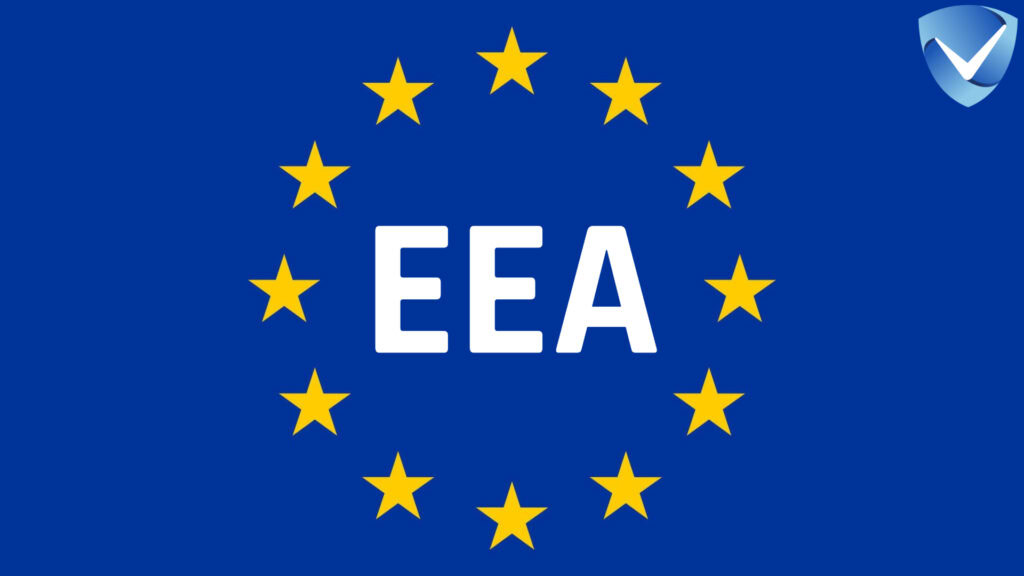What is the European Accessibility Act?
The European Accessibility Act (EAA) is a landmark directive introduced by the European Union aimed at enhancing accessibility across the EU member states. Established to address existing disparities in accessibility, the EAA focuses on creating a more inclusive environment for individuals with disabilities and older adults. Its inception arose from a multitude of factors, including increasing awareness of the rights of persons with disabilities and a commitment to fostering equality, as outlined in the UN Convention on the Rights of Persons with Disabilities.
This legislation sets forth key objectives, primarily centered around the harmonization of accessibility standards throughout Europe. By establishing a consistent set of requirements for various sectors, the EAA aims to eliminate barriers that inhibit access to essential services and products for individuals with disabilities. The act encompasses a wide array of areas, including information and communication technologies (ICT), transport, public services, and consumer goods, consequently affecting a broad spectrum of industries.
Significantly, the EAA is aligned with the overarching principles of the UN Convention, promoting the integration of persons with disabilities into all aspects of society. This alignment denotes a shift towards a more rights-based approach, emphasizing the importance of accessibility as a fundamental right rather than merely an accommodation. As businesses and organizations prepare for the implementation of the EAA, understanding its nuances and provisions becomes vital. The act not only drives change in policy but also encourages innovation in design and service delivery, thereby paving the way for a more accessible future.
Through its comprehensive approach, the EAA is expected to provoke a transformative effect on various sectors. As the deadline for compliance looms closer, stakeholders must engage in proactive measures to ensure alignment with the EAA’s guidelines and promote inclusive practices that cater to the needs of all individuals.
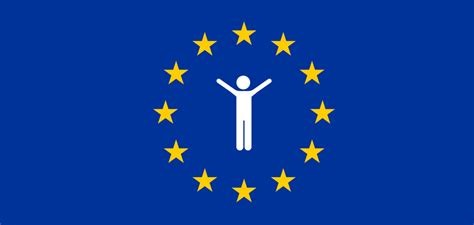
Key Deadlines and Requirements for Businesses
The European Accessibility Act (EAA) aims to ensure that persons with disabilities can access products and services on an equal basis with others. To this end, businesses must comply with specific deadlines and requirements established under this directive. It is crucial for companies to be cognizant of these timelines to integrate accessibility measures effectively into their operations.
Member states are mandated to transpose the EAA into national law by June 2022. This timeline is vital as it establishes a foundational framework for accessibility across various sectors. Once national laws are in place, businesses within those jurisdictions will have until June 2025 to meet the newly stipulated accessibility standards. These standards encompass a wide array of products and services, including digital platforms and physical premises, meaning that comprehensive planning and execution are necessary for compliance.
Importantly, the EAA provides an exemption for microenterprises, defined as businesses employing fewer than ten people and having an annual turnover or balance sheet total of less than two million euros. This means that while larger companies operating in affected industries must adhere to these requirements, microenterprises are not bound by the same obligations. However, they are encouraged to consider accessibility enhancements as part of their operations to foster inclusivity and potentially tap into new markets.
For larger corporations, non-compliance with the EAA can result in significant legal and financial repercussions. It is essential that businesses assess their current level of accessibility and implement the necessary changes well before the deadline. By doing so, they not only align with legal requirements but also demonstrate their commitment to inclusivity, which can bolster brand reputation and customer loyalty.
Industries Affected by the EAA
The European Accessibility Act (EAA) marks a significant legislative effort aimed at ensuring a more inclusive environment across various industries in the European Union. This act establishes a framework to enhance accessibility, particularly focusing on essential sectors that directly interact with consumers. Among the primary industries affected are e-commerce, banking, transportation, media, and communication tools, each facing distinct accessibility challenges and requirements.
In the realm of e-commerce, websites and mobile applications must adhere to accessibility standards to ensure that individuals with disabilities can easily navigate and utilize their platforms. This includes implementing features such as screen reader compatibility, keyboard navigation, and alternative text for images. The ability to access online shopping is not merely a convenience but a fundamental right, thus compliance in this sector is crucial for businesses targeting EU consumers.
Banking institutions are also subjected to the EAA, where accessibility is paramount. Banks must provide accessible online banking services, including the ability to manage accounts, initiate transactions, and access customer service. Establishing accessible ATM interfaces is equally important, ensuring that all customers can independently conduct their banking activities without barriers.
Transportation services, including public transit and ride-sharing platforms, must also comply with the EAA stipulations. This necessitates accessible vehicles, properly designed terminals, and technology that accommodates all users, including those with mobility impairments. Therefore, the transport sector has a critical role in fostering an inclusive society.
Meanwhile, media organizations are required to make their content accessible to individuals with visual and auditory impairments. This includes subtitling services, audio descriptions, and compliant streaming platforms. Finally, communication tools, such as video conferencing and collaboration software, must be designed with accessibility features that accommodate users with disabilities, ensuring everyone can participate fully.
How to Prepare for EAA Compliance
As the European Accessibility Act (EAA) deadline approaches, it is crucial for businesses to strategize and implement actionable steps to ensure compliance. The first step in this process is conducting comprehensive accessibility audits. These audits assess the current state of a company’s products, services, and facilities in relation to accessibility standards. By identifying existing barriers, businesses can prioritize areas for improvement and tailor their approach to meet EAA requirements effectively.
Once the audit is complete, developing a clear implementation plan becomes essential. This plan should outline the steps required to address any identified issues, complete with timelines and assigned responsibilities. By creating a structured framework, organizations can allocate resources appropriately and monitor progress towards compliance. The implementation plan should also include specific goals related to digital accessibility, physical spaces, and customer service practices.
Engaging with accessibility experts can significantly enhance a business’s ability to comply with the EAA. These professionals bring valuable knowledge and experience to the table, ensuring that organizations are not only aware of the latest standards but also understand best practices for implementation. Furthermore, utilizing various testing tools allows businesses to evaluate their accessibility performance continuously. These tools can range from automated testing software for digital content to user testing with people with disabilities, providing real-world insights into usability.
Training employees is another vital component in preparing for EAA compliance. Organizations must ensure that all staff members understand the importance of accessibility and know their roles in fostering an inclusive environment. Comprehensive training programs can equip employees with the skills needed to recognize accessibility issues and contribute actively to solutions.
By following these steps, businesses can effectively prepare for compliance with the European Accessibility Act and contribute to a more inclusive society.
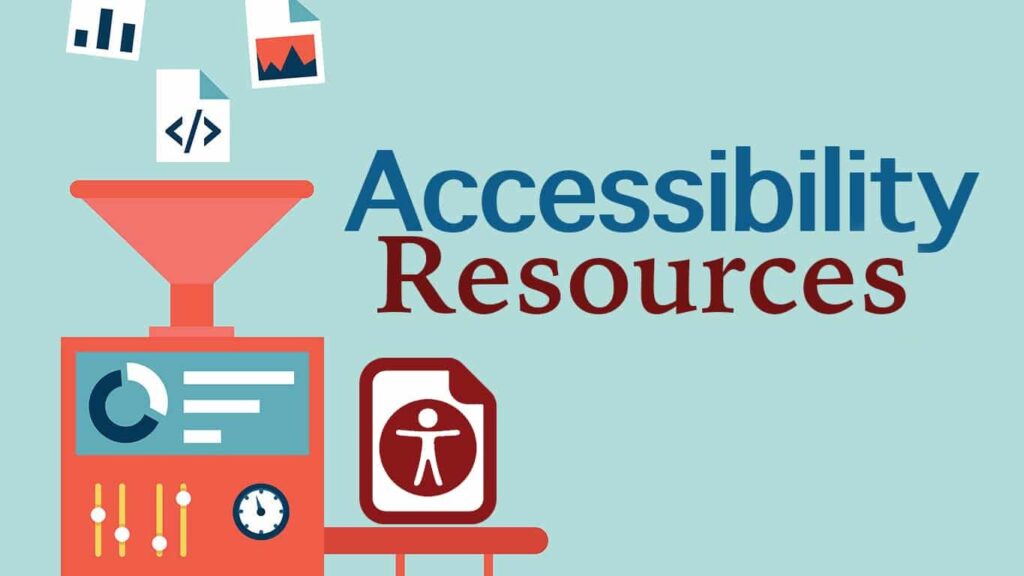
Tools and Resources for Accessibility Compliance
As businesses prepare to comply with the European Accessibility Act (EAA) by 2025, it is essential to identify the tools and resources available to facilitate this process. A comprehensive approach towards accessibility involves deploying effective testing software, following established guidelines, and leveraging industry-specific checklists to ensure compliance.
One of the most crucial tools available is accessibility testing software, which aids in identifying issues that hinder equal access to digital content. Tools such as WAVE, Axe, and Lighthouse provide insights into web accessibility based on the Web Content Accessibility Guidelines (WCAG) 2.1. These comprehensive platforms evaluate websites for adherence to accessibility standards, offering recommendations to rectify identified issues, thereby enhancing user experience and ensuring adherence to legal requirements.
In addition to testing software, businesses should familiarize themselves with relevant guidelines, such as WCAG 2.1 and EN 301 549. WCAG 2.1 lays down principles that promote accessible web content, targeting a variety of disabilities. EN 301 549 provides essential requirements for digital accessibility of ICT products and services in Europe, aligning with the EAA. Adherence to these guidelines not only aids in legal compliance but also broadens market reach by making products and services more inclusive.
Furthermore, industry-specific checklists can serve as a hands-on resource for organizations aiming to implement meaningful changes. These tailored checklists allow businesses to assess their current accessibility practices comprehensively, identifying areas for improvement and ensuring they remain in alignment with both European and international standards. By adopting these practical solutions, businesses will be better equipped to navigate the complex landscape of accessibility compliance.
Consequences of Non-Compliance
The European Accessibility Act (EAA) establishes essential guidelines intended to foster equal access for individuals with disabilities across the EU. Businesses failing to comply with these regulations may encounter a myriad of consequences that can severely impact their operations. One of the most immediate repercussions is the imposition of financial penalties. These can range from significant fines to mandatory compensatory payments, which can quickly accumulate, particularly for larger organizations.
Legal actions are another vital concern for non-compliant businesses. Individuals or advocacy groups may lodge formal complaints against organizations that do not adhere to EAA standards. Such legal disputes can be costly and time-consuming, both in terms of monetary resources and the diversion of management attention from core business activities. Beyond immediate legal ramifications, a history of non-compliance can also lead to increased scrutiny from regulators and may complicate future operations.
Reputational damage represents another critical consideration for businesses overlooking EAA requirements. In today’s socially-conscious environment, consumers increasingly prioritize inclusivity and accessibility in their purchasing decisions. Organizations that fail to meet accessibility standards may alienate potential customers, leading to decreased sales and the erosion of brand loyalty. The ripple effects of reputational harm can extend beyond the consumer base, potentially affecting relationships with partners and collaborators who may view non-compliance as a risk to their own credibility.
Furthermore, non-compliance can restrict a business’s access to EU markets, limiting its ability to operate or expand within the region effectively. This restriction could lead to reduced revenue streams and diminished competitive advantage. Therefore, ensuring adherence to the EAA not only mitigates these risks but also aligns businesses with best practices in social responsibility.
Benefits of Early Compliance
Businesses that proactively work towards compliance with the European Accessibility Act (EAA) stand to gain a multitude of benefits that extend beyond merely meeting regulatory requirements. One of the most significant advantages is the enhancement of customer experience. By prioritizing accessibility, companies can ensure that their products and services are usable for all consumers, including those with disabilities. This inclusivity not only improves satisfaction but also fosters brand loyalty among a diverse customer base.
Furthermore, early compliance facilitates enhanced usability for all users, not just those with disabilities. An accessible design is often characterized by clear layouts, intuitive navigation, and effective communication of information, which can lead to increased user engagement. Companies that embrace this approach can create a more efficient and enjoyable experience for everyone, leading to higher conversion rates and reduced customer churn.
In a competitive marketplace, gaining a strategic edge is crucial, and aligning with the EAA early can provide significant advantages. Businesses that demonstrate a commitment to accessibility can differentiate themselves from competitors who may delay compliance. This proactive stance may attract customers who prioritize ethical considerations and social responsibility when making purchasing decisions. Additionally, this focus on accessibility can enhance corporate reputation and profitability in the long run.
Moreover, fostering innovation is a natural byproduct of early compliance. The process of redesigning products and services to meet accessibility standards often encourages creative problem-solving and can result in new ideas and improvements. Organizations that prioritize inclusivity can inspire their teams to think outside the box and develop cutting-edge solutions that meet a broader range of consumer needs.
The early adoption of EAA compliance not only benefits businesses in terms of customer satisfaction and market positioning but also contributes positively to societal well-being by promoting inclusivity and accessibility for all. As such, it may prove to be a strategic investment that shapes the future of business operations in a rapidly evolving landscape.
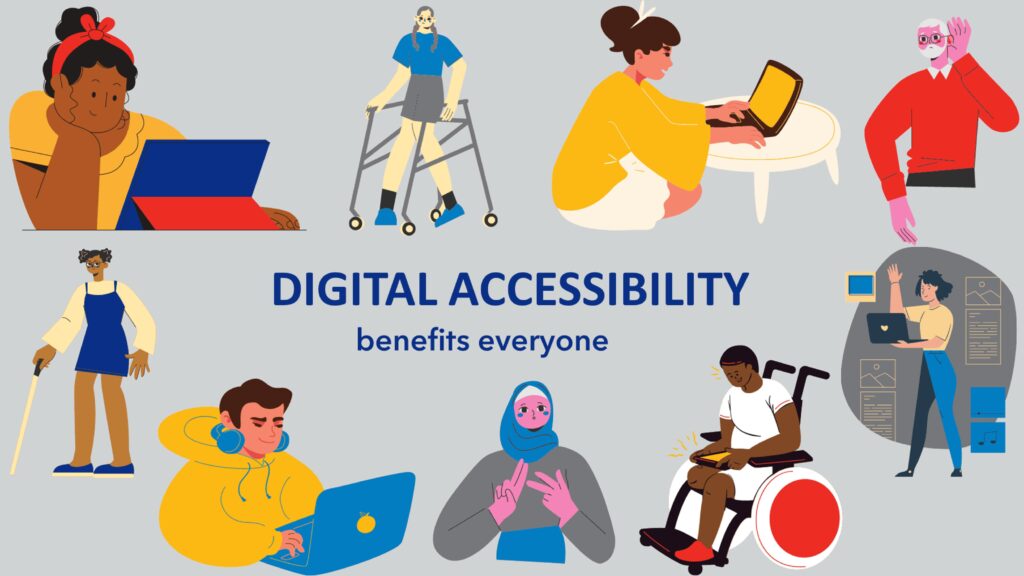
The Role of Businesses in Promoting Accessibility
The European Accessibility Act (EAA) places considerable emphasis on the responsibility of businesses to create inclusive environments for individuals with disabilities. Compliance with accessibility regulations is not merely a legal obligation; it extends to fostering a culture of inclusivity as part of corporate values and practices. Businesses are encouraged to view accessibility as a fundamental component of their operations, rather than just an afterthought. This proactive approach not only aligns with the EAA but also benefits organizations in various ways.
To begin with, incorporating accessibility into business strategies enhances the customer experience for all, particularly for those with disabilities. An accessible environment ensures that everyone can engage with services and products, which broadens the customer base and potentially increases revenue. Furthermore, demonstrating a commitment to accessibility can bolster a company’s reputation, fostering customer loyalty and trust. By prioritizing inclusivity, businesses signal to their stakeholders that they value diversity and equal opportunities.
Moreover, the EAA encourages companies to take direct actions beyond compliance. This includes engaging employees in training focused on accessibility awareness and best practices. By educating staff about the importance of inclusivity, businesses can cultivate an understanding of the challenges faced by individuals with disabilities. Additionally, organizations can involve these individuals in the development of products and services, ensuring that they meet the actual needs of diverse users.
Emphasizing accessibility as a core aspect of corporate philosophy can lead to innovation in product design and service delivery. In this continually evolving marketplace, businesses that prioritize accessibility not only fulfill their legal obligations but also distinguish themselves as leaders in social responsibility. In conclusion, the role of businesses in promoting accessibility within their practices is vital, as it contributes to creating an inclusive society where all individuals can participate fully and equitably.
Try Our Free Website Accessibility Scanner
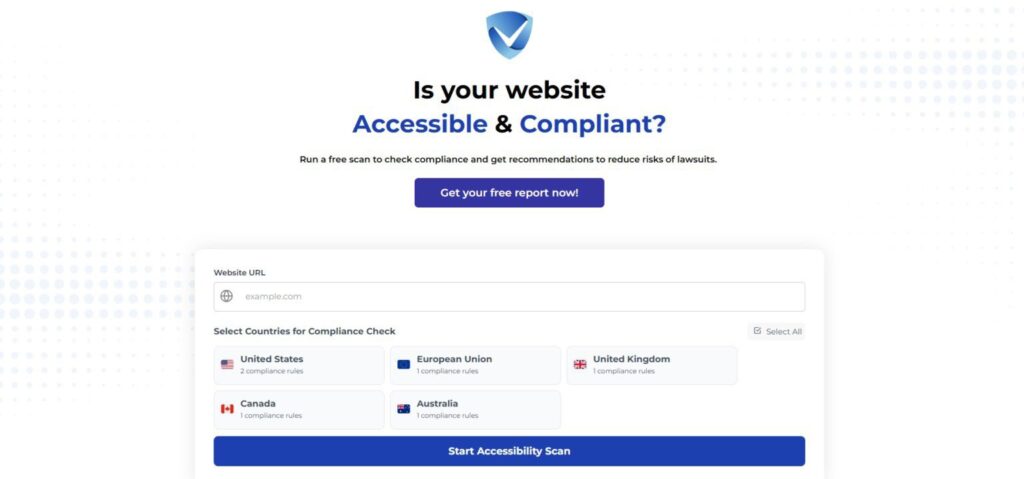
The enactment of the European Accessibility Act (EAA) in 2025 presents a pivotal opportunity for businesses to enhance their operations and customer engagement through improved accessibility. Immediate action is essential for companies seeking compliance and wishing to foster an inclusive environment for all individuals, including those with disabilities. A proactive approach is necessary to ensure that organizations are not only meeting legal requirements but are also reaping the benefits of inclusivity.
One of the first steps businesses should consider is conducting a comprehensive accessibility audit. This audit will help identify existing barriers within products, services, and physical spaces, allowing organizations to recognize specific areas that require improvement. By assessing current accessibility standards, businesses can create a clear roadmap toward compliance with the EAA. Engaging with disability experts or utilizing accessibility assessment tools can facilitate accurate evaluations, leading to meaningful enhancements in accessibility.
Additionally, organizations should evaluate and implement assistive technologies and accessibility tools that can improve user experiences. These tools may include features such as screen readers, voice recognition software, and adaptable interfaces, which are crucial for creating accessible digital environments. Exploring existing technologies can significantly enhance not only compliance with the EAA but also overall customer satisfaction and engagement.
Furthermore, fostering a culture of inclusivity within the organization is paramount. Businesses can start by providing training sessions for employees that emphasize the importance of accessibility and inclusivity, thereby cultivating awareness and sensitivity toward the needs of individuals with disabilities. By prioritizing inclusivity as part of the company culture, businesses can ensure that all team members are aligned in their commitment to creating an accessible world.
In summary, the impending EAA requirements necessitate immediate action from businesses. By conducting audits, utilizing suitable accessibility tools, and instilling an inclusive culture, organizations can not only comply with regulations but also unlock transformative potential that benefits everyone involved.



